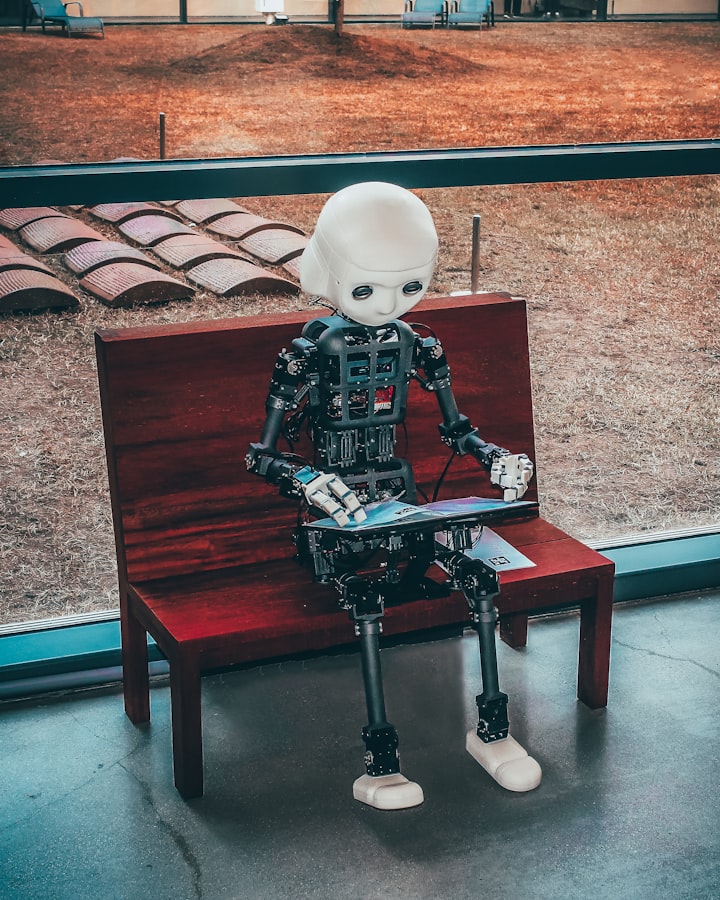Welcoming AI Essay Writing to Your Classroom
Some teachers are still skeptical, but this tech is worth trying

In December 2022, when ChatGPT from Open AI burst into the space, Google Trends found the searches for "AI essay writing" jumped super high: 2,041% compared to the last five years. The reason was a report from The Guardian claiming that one-fifth of submitted college essays were AI-generated. As a teacher, I understood the possible negative impacts of this software and the arguments of my colleagues who called ChatGPT a threat to the education system.
Let's face it: The cons are obvious.
The first one that comes to mind is the issue of academic integrity violation. Teachers are skeptical, insisting that students trust ChatGPT for all writing tasks like essays, summaries, research papers, etc. While it creates generic and superficial texts, they are still original, thus making it more challenging to distinguish via plagiarism checkers. The concern is not only about plagiarism itself but its influence on a student's skills:
The overuse of AI essay writers may hurt writing and communication skills, lead to a decline in critical thinking and creativity, and prevent students from developing their analytical skills. Educators fear that students might compromise academic growth, ranking comfort over learning. There's a risk our mentees would focus more on the technical requirements of the task they get, giving up the depth. When I discussed the issue with my colleague who worked at Lincoln Park High School (Chicago), he reflected on the homework death because of ChatGPT. He said he would organize pen-and-paper coursework to prevent students from using AI and objectively assess their knowledge and skills.
I'm not that skeptical. Yes, ChatGPT and other corresponding tools change the education niche. Like it or not, they are already here, and they won't go anywhere simply because teachers raise the alarm, say no to AI tools at schools, and warn to ban students who'll use AI in classrooms.
ChatGPT itself is neutral. It's not good or bad: Its functioning and the consequences of using it depend on its users' intentions. While some ask it to produce malware for cyber-attacks, others see it as a significant helping hand, thinking about getting the most out of its features. Speaking to other teachers, I don't support their thesis, as "most students ask ChatGPT to write papers." Things are never as bad as they seem:
The latest report about student perspectives on AI's integration in the edu sphere (40% of respondents were high schoolers) reveals that only 8-10% use this technology for essay writing. It's not only because their schools don't allow AI but also because they need to trust the accuracy of AI tools.
Our mentees recognize the weaknesses of ChatGPT and understand that it could be more intelligent than many believe. Its generated texts need more depth, cover complex ideas, and miss the context. Also, AI can't verify the data's relevance, refuses to discuss controversial issues, and can provide false info as if it were true. It's a teacher's task to explain to students how to use AI tools for good and to change our approach to teaching writing skills in classrooms.
We can enhance the learning process by organizing classroom conditions for students to explore ChatGPT features and experiment with them in a real-life learning environment. Discussing the powers and limitations of AI in academia, including ethical issues, we'll promote critical thinking and analysis and engage creativity.
My three ways of using ChatGPT in lessons are for learning research, grammar, and digital literacy.
Exercise 1: Develop a question.
I introduce a topic to my students and ask them to think about a related research question. They can address ChatGPT and give prompts for it to suggest some questions related to the topic or the student's specific research interests. Once the answers are ready, we sit and analyze the info provided by ChatGPT, discussing how to sharpen the research questions and come up with more related specific topics. Such a collaboration with classmates and AI serves to grow analyzing skills. Also, it helps students learn more about the subject and get a more diverse understanding of it.
Exercise 2: Catch ChatGPT on grammar mistakes.
I teach the French language, so I decided to "hire" ChatGPT as my assistant for grammar lessons.
I give students an essay with many grammatical errors and ask them to edit it. They work in groups, or it can be a task for one mentee when I have individual lessons. Also, I give the same essay to ChatGPT, prompting it to correct all the mistakes. Once everything's ready, I share ChatGPT's variant with students and ask them to compare the results and evaluate the AI's response.
Not only does this task engage mentees, but it also helps them remember grammar rules better. It encourages peer collaboration (when working in groups) and demonstrates the AI tech specifics. Students see ChatGPT isn't perfect, and they shouldn't take its answers for granted. They learn to use the tool as if it's their assistant, not a full-time task performer.
Exercise 3: Evaluate the answer.
ChatGPT helps me teach digital literacy to my students. I know that it's hard for them to resist the temptation of 100% relying on what the tool "says," so we practice evaluating ChatGPT's answers for credibility. Specifically, we learn to critically analyze the information it provides and differentiate its credible sources from unreliable ones.
A student asks ChatGPT to generate a response for a given research question. After that, we check the facts, data, and arguments in that response using the CRAAP test: I ask mentees to analyze whether the information by ChatGPT is current, relevant, accurate, authoritative, and purposeful. I give them a credible source on the topic and ask them to compare the info from AI with that from my reference. Such practice teaches them to recognize incongruities and identify inaccuracies in the online data.
The below three are starting points. I plan to explore ChatGPT and find new methods to integrate it into my teaching process. It is an opportunity to update the education system and our approach to teaching writing and other creative subjects. Since the technology is already here, why ban it in the hope of its disappearance from the niche? Let's better embrace it to enhance our students' educational experiences.
About the Creator
Lesley J. Vos
Content writer and blogger. Ambitious dreamer and wanderer. Proud guest writer and contributor to blogs on writing and social media. Twitter: @LesleyVos
Enjoyed the story? Support the Creator.
Subscribe for free to receive all their stories in your feed. You could also pledge your support or give them a one-off tip, letting them know you appreciate their work.






Comments
There are no comments for this story
Be the first to respond and start the conversation.